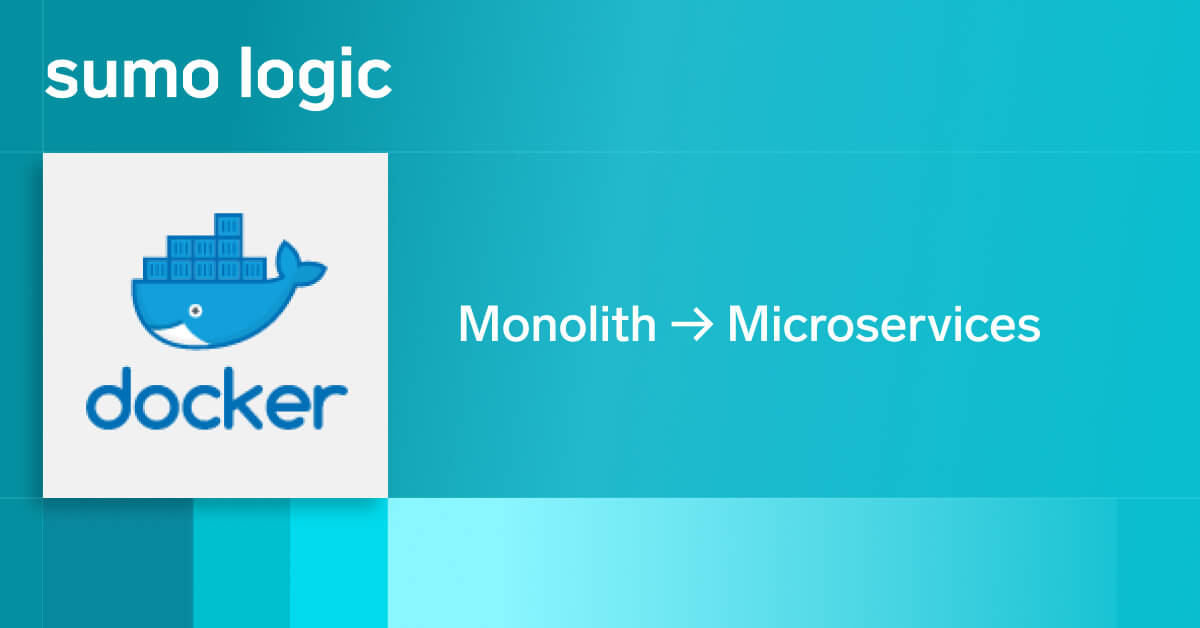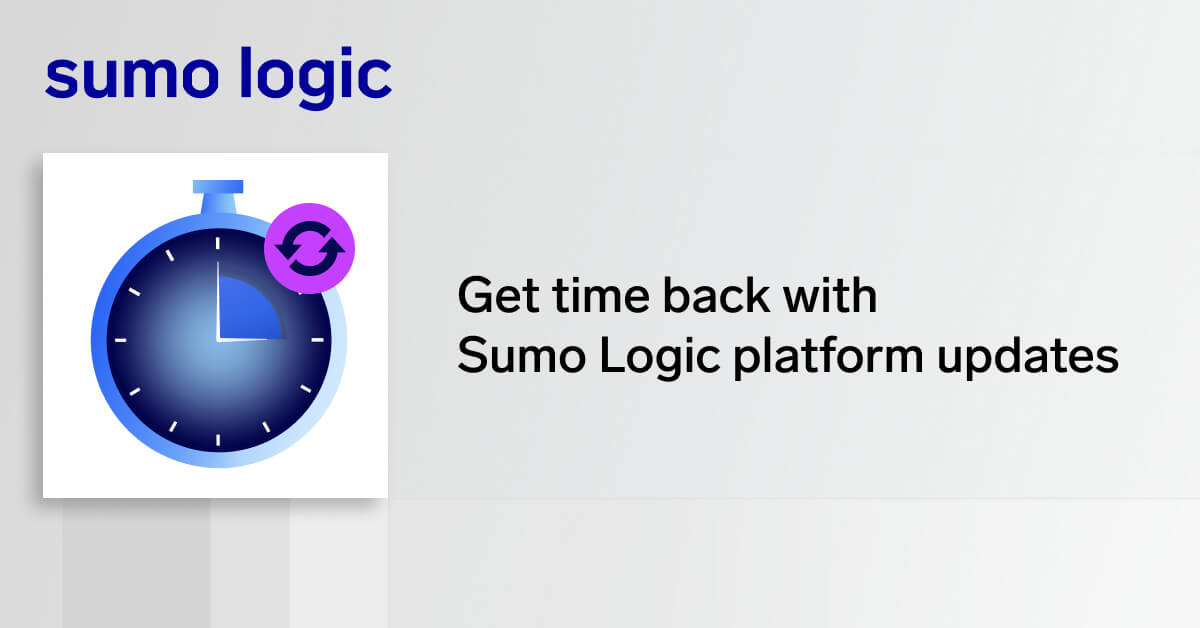An ever-increasing number of organizations are working in the cloud. It depends on their business model what cloud delivery model they use. The three most common deployment models for cloud services are software-as-a-service (SaaS), platform-as-a-service (PaaS) and infrastructure-as-a-Service (IaaS).
Here, we explain the differences between these cloud delivery models and what you need to consider when choosing the right model for your organization. Learn too, how Sumo Logic can help when managing these deployment models.
SaaS
What SaaS Is
SaaS or Software as a Service, makes use of the Internet to deliver applications, which are managed by a third-party vendor, to its users.
How It Is Delivered
SaaS is delivered via the Internet by a third party directly to all clients. The software is maintained by the third party, remotely.
The Advantages of SaaS
Due to the remote installation, configuration and maintenance by the vendor, the client’s IT department has more time for more important issues involving the client’s company. This not only saves time, but also money.
The Characteristics of SaaS
SaaS applications can be accessed over the Internet. They are centrally managed and are hosted from a remote server. The vendor, not the user, is responsible for the configuration of the hardware and software needed.
When To Use SaaS
First, SaaS is beneficial when used by a company – e.g., a startup – since you do not have time to manage your software.
Second, the SaaS deployment method is very suitable when you need an application that is accessible via web and mobile. It is also recommended for applications that are not used daily.
Finally, SaaS is appropriate when you need an application for a short time period because of the subscription attribute.
Limitations and Concerns
There are some limitations and concerns for using a SaaS deployment model. Vendor lock-in can occur. Onboarding a SaaS may be easy, but be aware of significant costs with data portability when transferring to other SaaS apps. Also be conscious of less interoperability since not every SaaS app follows open standards for integration. This can create problems when connecting to other apps.
Regarding security, public cloud-based SaaS apps are less secure in transferring sensitive business data, which could lead to security, compliance and privacy issues.
Lastly, there is no one-size-fits-all SaaS solution because these are specialized apps. Customization is therefore more difficult compared to on-premise apps.
Sumo Logic and The SaaS Vendor
Sumo Logic is a realtime SaaS platform to operate and secure your applications at cloud scale. Here, machine learning plays an important role. It can easily integrate with other SaaS platforms like Salesforce.
With Sumo Logic Continuous Intelligence solution you can monitor the Salesforce performance in real time, but also quickly identify and rectify possible security breaches. This also applies to other SaaS apps.
Examples of SaaS
PaaS
What PaaS Is
A Platform as a Service (PaaS) provides a framework where customized applications can be built upon by developers.
How It Is Delivered
The delivery of PaaS is almost the same as SaaS. Instead of software delivery over the Internet, PaaS gives a platform for software creation. PaaS allows businesses to design and create applications that are built into the PaaS with special software components called middleware.
The Advantages of PaaS
With PaaS you have easy, low-cost development/deployment of apps. Also, with PaaS your software is scalable and highly available. Developers can customize apps without worrying about the software. And the development speed is higher, because developers can customize apps without worrying about the software.
Characteristics of PaaS
With virtualization technology, resources can easily be scaled up/down when needed. PaaS is essentially a suite of services to assist with the development, testing, and deployment of applications. Multiple users can access it via the same development platform and it has smooth integration with web services and databases.
When To Use PaaS
With PaaS you can streamline the workflows in development.
Do you have customized applications? PaaS delivers a great platform for customized applications with scaling possibilities.
With PaaS you can have a platform on a tight budget and you can reduce your costs. It also enables rapid app development and deployment.
Limitations and Concerns
As with SaaS, PaaS also has limitations and concerns. Although an organization can run its own app on a PaaS solution, the data is still on a third-party server, controlled by the PaaS vendor. This raises concerns about data security and privacy risks.
There is potential for vendor lock-in, and it can be difficult to switch a PaaS solution if the vendor does not have a solid migrating policy.
Runtime issues can occur when a PaaS solution may not be compatible with a framework or language of your choice. Be wary, too, of the versions of the languages and frameworks the PaaS solution can work with.
Also use discretion when you have a legacy system, as some PaaS solutions are not customizable for legacy systems.
Examples of PaaS
Sumo Logic and the PaaS Vendor
Microsoft Azure Cloud is an example of a PaaS solution that can be integrated with Sumo Logic. The integration with Azure Monitor and Event Hub is simple. Sumo Logic can also increase visibility of the content in Azure Audit, Network Inspector, SQL, Active Directory, etc.
IaaS
What IaaS Is
Infrastructure as a Service (IaaS) are computing resources capable for accessing and monitoring computers, storage, networking, etc. Buying extra hardware is not needed.
The client leases the hardware from the IaaS vendor.
How IaaS Is Delivered
The delivery is via virtualized cloud servers. These are given to the organization through a dashboard or an API, enabling clients’ complete control over the complete infrastructure. IaaS is an outsourced “virtual data center” in the cloud.
Contrary to SaaS and PaaS, the IaaS clients are themselves responsible for managing the applications, Operating Systems, etc. But, IaaS providers will manage the servers, hard drives, etc.
Advantages
IaaS is a very flexible cloud computing model with a simple deployment of storage, networking, servers, and processing power.
The costs of an IaaS varies, it essentially depends on the client’s consumption. Clients have complete control of their infrastructure and can profit from the high scalability.
Characteristics of IaaS
IaaS is characterized by its Resources as a service – leasing hardware infrastructure. As stated earlier, the costs vary depending on consumption levels.
Multiple users can work on one single piece of hardware. This makes it a very flexible and scalable deployment model.
When To Use IaaS
For startups and small companies, IaaS is an alternative for purchasing and creating hardware and software. This saves time and money. For large and growing companies, IaaS is beneficial because these companies have to switch to specific hardware and software depending on their current needs.
Limitations and Concerns
As with SaaS and PaaS, IaaS also has certain limitations and concerns.
The IaaS vendor and client are connected via a Virtual Machine, which can compromise security. When there is multi-tenancy, the IaaS vendor must ensure only the client, and no other clients, can access the allocated IaaS solution.
As with PaaS, the same problem arises for IaaS. It may not be customizable for legacy systems.
Customers will be responsible for security, backup, and business continuity of their data. This requires adequate training which costs money and time.
Examples
Sumo Logic and the IaaS Vendor
As noted, security is a challenge when leasing a third-party infrastructure (IaaS). Therefore, Sumo Logic created the Sumo Logic security analytics tool offering IT organizations:
- An integrated view of the cloud network security
- A monitoring solution for the client’s private, public or hybrid cloud.
Saas vs. Paas vs. Iaas
For every cloud delivery system (SaaS, PaaS and IaaS), Sumo Logic has created a solution for its clients.


